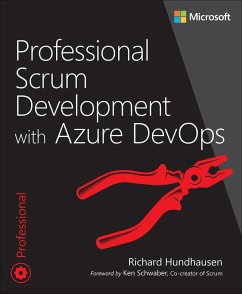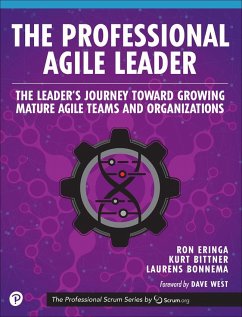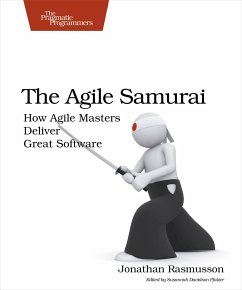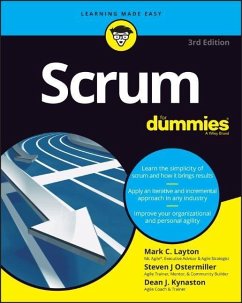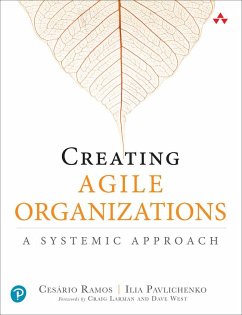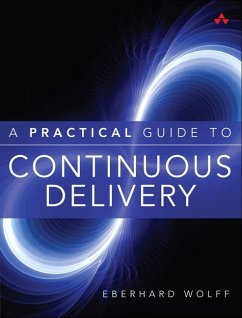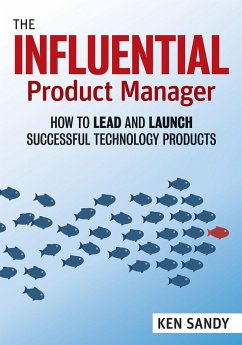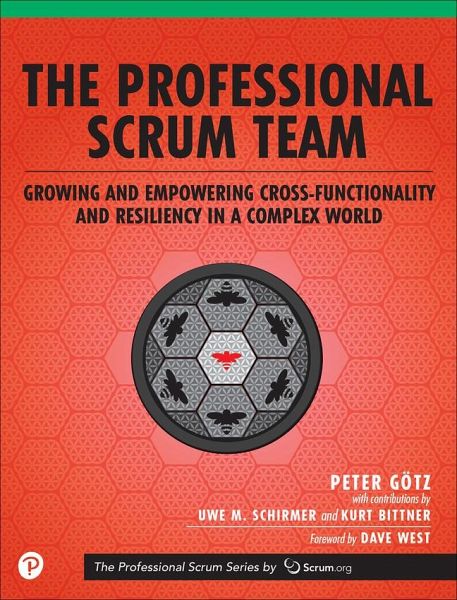
The Professional Scrum Team
Versandkostenfrei!
Versandfertig in 2-4 Wochen
38,99 €
inkl. MwSt.
Weitere Ausgaben:

PAYBACK Punkte
19 °P sammeln!
The Practical Guide to Optimizing Product Value through Better Teamwork with Scrum Professional Scrum is hard, not because the ideas are hard, but because it requires persistence, focus, and dedication to not let the day-to-day realities get in the way. In this book, Peter, Uwe, and Kurt have provided a collection of materials to help the Scrum Team deliver value and feel happy doing it. --Dave West, CEO and Product Owner, Scrum.org Teams and individuals find the rules of the Scrum Framework to be easy to describe but challenging to implement. The Professional Scrum Team helps you bring the Sc...
The Practical Guide to Optimizing Product Value through Better Teamwork with Scrum Professional Scrum is hard, not because the ideas are hard, but because it requires persistence, focus, and dedication to not let the day-to-day realities get in the way. In this book, Peter, Uwe, and Kurt have provided a collection of materials to help the Scrum Team deliver value and feel happy doing it. --Dave West, CEO and Product Owner, Scrum.org Teams and individuals find the rules of the Scrum Framework to be easy to describe but challenging to implement. The Professional Scrum Team helps you bring the Scrum Framework rules to life in your everyday work, optimizing both team and individual performance and creating more value. Three leading Scrum experts bring together proven practices based on decades of real-life experience participating in, leading, and supporting Scrum Teams. They introduce a team as it starts out with Scrum and follow it as it gains hard-won practical experience, gradually mastering the intense collaboration that Scrum demands. As you share the team's experience--facing and overcoming realistic challenges--you'll discover better ways to work together, enhance your practices, leverage tools, continuously improve, and deliver functionality in ever-shorter cycles. * Understand how Scrum Teams work, collaborate, and promote transparency * Explore common problems that lead less experienced Scrum Teams to give up * Find your Scrum Team's best approach to solving complex adaptive problems * Integrate DevOps practices with Scrum to improve effectiveness * Productively and professionally resolve conflicts that arise from close collaboration * Help your organization learn how to improve its results by better supporting its Scrum Teams This guide is for anyone who works with Scrum Teams or wants to become more effective as a Scrum Team member or leader. Register your book for convenient access to downloads, updates, and/or corrections as they become available. See inside book for details.
Dieser Artikel kann nur an eine deutsche Lieferadresse ausgeliefert werden.




